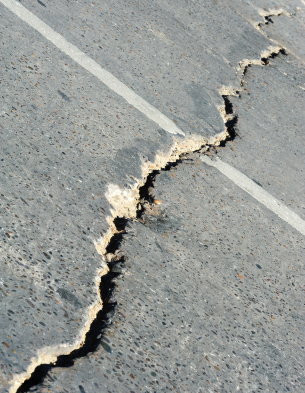Cement and concrete are popular building materials due to their durability and strength. To maximize their useful life and to prevent damage, cement floors, concrete floors and other concrete surfaces, such as concrete driveways, concrete patios, concrete steps, and concrete porches must be properly maintained.
Regardless of the type of concrete you have, there are four basic steps that are required to maintain your concrete and cement properly. The following are general recommendations for concrete and cement upkeep; check with your cement worker or concrete work contractor, and also with the manufacturer of your concrete finishing products, for specific product recommendations and maintenance instructions.
General Guidelines for Maintaining Cement and Concrete
- Cleaning the concrete on at least a yearly basis is highly recommended as a first step in concrete and cement maintenance. Regular cleanings help to remove dirt and grime from the concrete and can prevent rusting and staining. To read more about how to properly clean your cement and concrete, including indoor concrete floors and cement floors, click here.
- It is essential to repair any cracks in the concrete promptly and effectively. Cracks in the concrete allow water to permeate the surface, which weakens the concrete’s structure. This is especially problematic in climates that experience the freeze-thaw cycle. For more information about how to fix and repair concrete click here.
- Sealing joints in the concrete is another necessary step in the proper upkeep and maintenance of cement and concrete. Joint sealer is a soft material that is able to accommodate concrete as it shrinks and expands. The sealer acts as a barrier which prevents water, ice, and dirt from entering the joints and the subgrade. Sealers also help prevent weeds and grasses from sprouting up out of the joints in the concrete. As a general rule, concrete sealer should be checked annually and repaired/replaced as needed to maximize the lifespan of the cement and concrete.
- Sealing the actual concrete surface is the fourth required step for proper cement and concrete maintenance. In general, sealers offer the concrete surface protection from water and prevent dust from settling into the surface and staining the concrete. There are a range of concrete sealers available and the best sealer depends on what the concrete will be exposed to. There are concrete sealers that provide resistance to ultraviolet light, mildew, grease, fertilizer and more. Consulting with your cement worker or concrete work contractor is the best way to determine the proper concrete sealer for your concrete surfaces.
Cement and concrete are known for being strong and long-lasting. Many people don’t realize the importance of maintaining cement and concrete properly. Although it takes a little bit of work, spending just a little time cleaning and caring for your cement and concrete will help extend its lifetime and give you the best return on your investment. Many cement workers and concrete contractors provide cement maintenance, cement cleaning, and concrete repair services to help you properly care for your cement and concrete investments.

